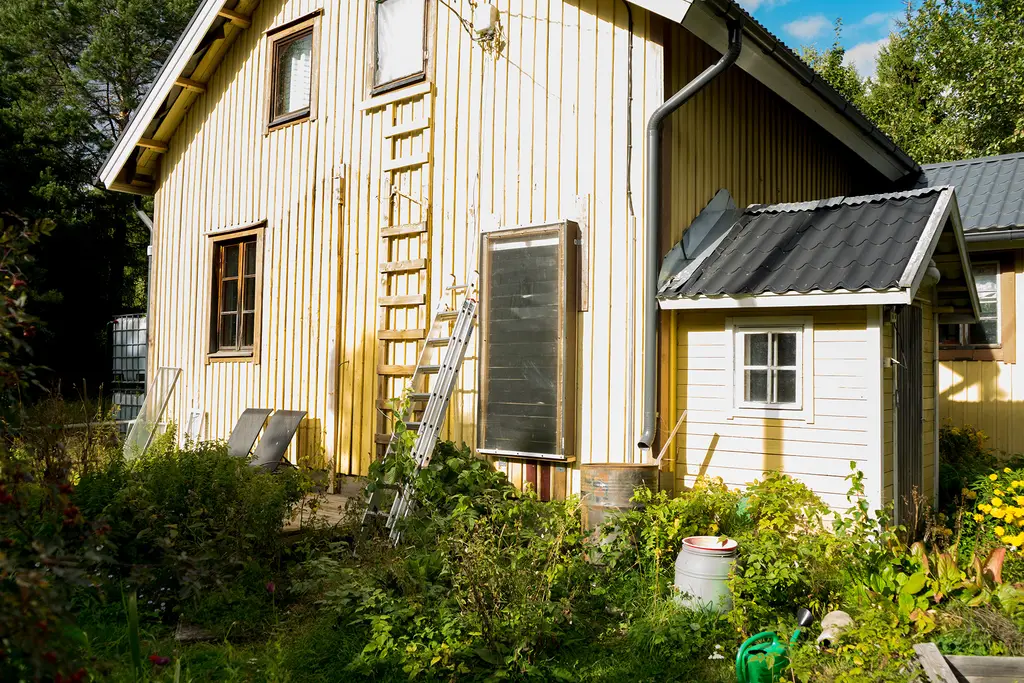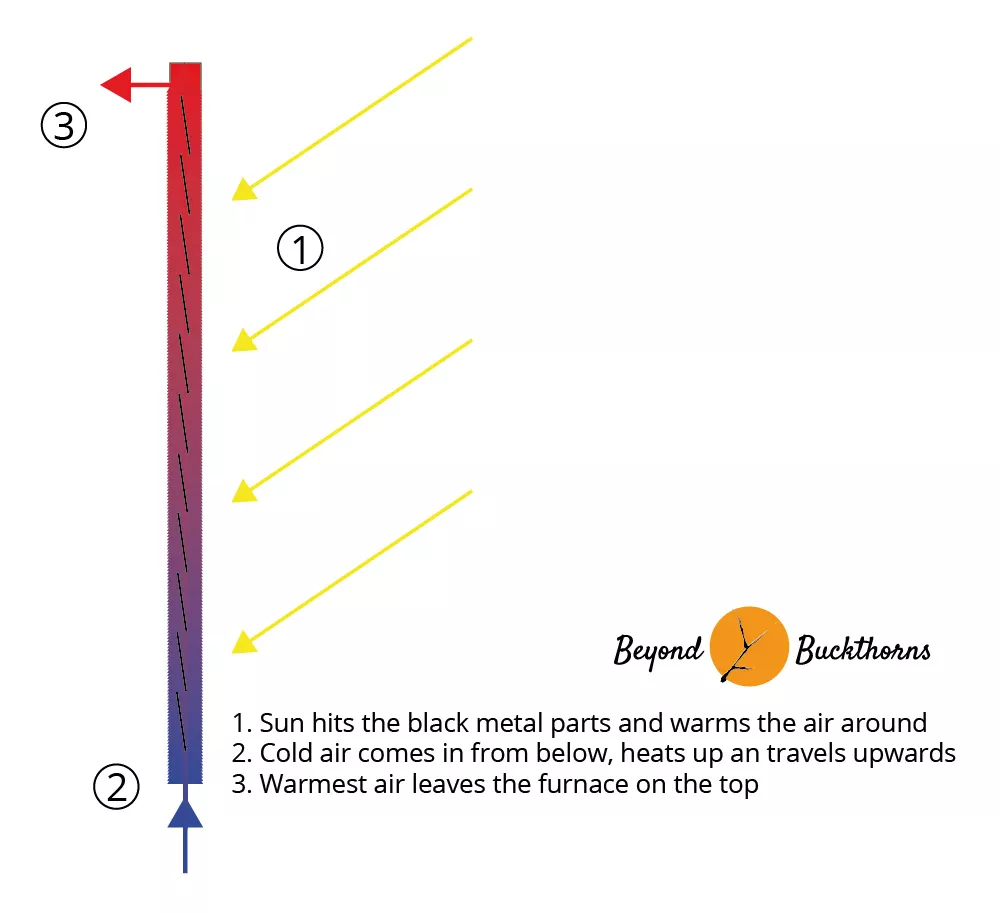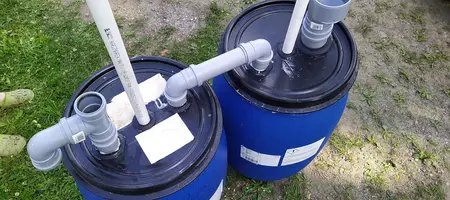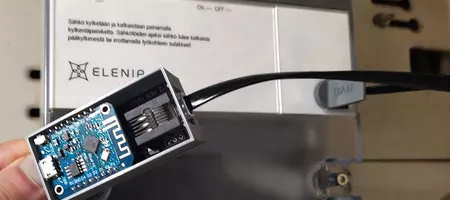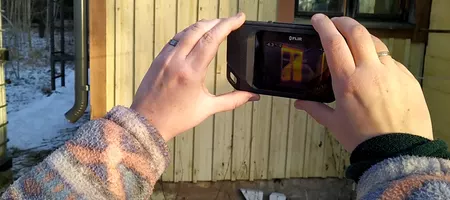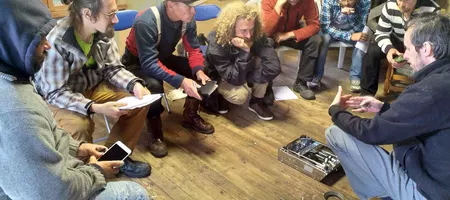Some years back I came across different videos and blog posts about solar air heaters. Solar air heaters also called Solar furnace are devices that use the solar energy to heat up air by using black absorption materials.
- Sun hits the black metal parts and warms the air around
- Cold air comes in from below heats up and travels upwards
- Warmest air leaves the furnace on the top
The most popular air heater, the one which made it even to Finland, was one made out of cans. It is made of black sprayed soda or beer cans where the top and bottom got removed. The cans are put together to build a tube and then multiple tubes get put inside a housing with a glass / transparent polycarbonate in front of the tubes. Air is passing in from below, heating up inside the black painted tubes and then passing out on top. From what I have seen in the videos it works pretty well – even in Finland.
Since I was already playing around with different technologies, especially biogas and off-grid solar, solar air heating was a consequent continuation. I always found passive solar highly interesting since I saw one in Portugal. In 2020 I decided it is time to build one.
Deciding build size and sourcing materials
Dimension is of course everything. Using some below a square meter of stuck together cans vs. the big solar furnaces used to heat up entire construction barns in the US is a no-brainer. I thought practical: I can get treated wood board and other construction material from K-Rauta nearby. Those boards come in the size 1,2 x 2 meter. The polycarbonate for the front comes in 1x 2 meter. Instead of sawing a lot of material and producing a lot of waste I just used exactly the size determined by the material. For insulating the back I used some not so pleasant material but still same size. In order to protect it from wind the sides are filled with cellulose insulation.
I had some old metal laying around, which I painted black (of course with a protective mask) and let them get cut into size by a nearby company. The cut black metal sheets are placed on a slope that gets narrower upwards. Leading all the warm air into just one direction; the opening at the upper end.
On the lower side the intake holes are covered with a mesh. The sides where the polycarbonate joins the wood are closed with L-profiles making sure no water can get in.
Thanks to my Flir cam, I love that tool, I took some pictures of the heater during sunny spring days – days where we still have to fire up the oven. The thermal collector can produce a continuous stream up to 45°C when it is about 0°C outside – if the sun is shining.
Connection established
With the help of friends we connected the solar air heater to the kitchen in autumn 2022. After one day I could already feel a constant 26°C coming in from the outside on a 12°C day. If there is enough sun the system supplies heat.
Costs
The total costs were 300,- €. I can’t tell yet how fast it will amortize but as soon I have data from one full winter I’ll compile a report.
Reflection
Without data I can’t prove the efficiency of the furnace. With Arduinos and Raspberry Pis it is today easy to code some simple logging device. I will used two temperature sensors to track the temperature inside the furnace and inside the kitchen. I also will us a light dependant resistor (LDR) which tells me whether the sun is shining or not, all the info visible on an e-ink display in the kitchen. The data gets fed into a database and from there it can be pulled.
To let 2 years between building and deployment go by makes this project nearly my longest in the last years. It’s a little bit of a shame to not deploy it, but things are sometimes not that obvious or that easy. The furnace was extremely heavy, more than 20kg, and difficult to handle do to its size. The next one should be deployed right after building.
The furnace gets hotter on top than on the opening. Means I’m losing heat due to the design. I have some ideas how to get around it. Lets improve my first design!
A solar air heater is one of the view things that one can easily build on its own. It’s not as complicated as solar panels (have you ever build them on your own?), or biogas (have you ever build one on your own?) or wind (OK, I don’t ask). Let me close with TH’s words: “please do try this at home!”

